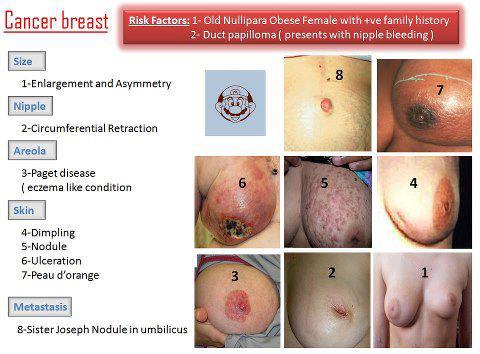How do you get hepatitis B infection?
Hepatitis B infection from person to person, blood, blood products and body fluids (sexual contact) as susceptible to be transmitted from mother to baby at birth. And carriage of the disease is prevalent in countries the most important transit route for the transition from mother to baby during birth.
In developed countries, the most important mode of transmission, intravenous drug use and sexual contact.
Who are the groups with high risk of hepatitis B infection?
First of all, dealing with health-doctors, dentists, nurses, health care personnel at risk.
Hemodialysis patients are at risk
By intravenous drug users, gay or lesbian at risk do not take precautions.
 What are the results of short-term consequences of the disease?
What are the results of short-term consequences of the disease?
Hepatitis B virus causes acute and chronic hepatitis. 90% of the newborns developed infection, 50% of children tend to progress to chronic disease. 5-in 10% of adults with chronic hepatitis B virus infection.
Acute hepatitis can watch as light as a result of liver failure resulting in death. Infection in some patients who had acute loss of appetite, nausea, vomiting, fever, abdominal pain and jaundice is seen as the complaints.
Severe, could save the life of liver transplant patients who develop liver failure. However, 5-10% of the adults who had acute chronic disease can be monitored.
What are the long-term prognosis of the disease?
Hepatitis B virus is all the people who do not show clinical and laboratory findings. Some people just carry the virus in their bodies. This is a part of patients when liver biopsy is possible to detect signs of hepatitis.
There is also some people with chronic hepatitis or liver biopsy, clinical findings there is very little evidence of disease. This is a patient at the time, such as cirrhosis and liver cancer develops in diseases that are serious and cause death.
How is the diagnosis of hepatitis B virus infection?
Hepatitis B infection is diagnosed in some serological tests. Weeks after receipt of the special tests of the virus becomes positive in the serum. This parallel testing of liver enzymes in the blood rises.
Is it possible to protect against hepatitis B virus infection?
Hepatitis B virus infection is a disease that is maintained by the vaccine. All These babies should be vaccinated against hepatitis B virus infection. The first dose at birth is. The second dose 1-4 months, 3 dose can be made between 6-18 months. Currently, the recommended vaccine schedule 0, 1, is 6 months.
How is infection from mother to baby?
Every pregnant woman be tested for hepatitis B virus infection, perhaps resulting from the baby's life against a disease carried by the adoption of measures. Transmission of disease to the baby via the placenta is extremely rare. Jump to secretions and blood of the mother at birth, the baby is infected, respectively.
What should be done to protect the baby from infection?
Babies born to mothers with hepatitis B carrier or chronic infection, should be washed thoroughly immediately after birth. If the baby needed a blood sample taken after washing and vitamin K should be taken. Within the first 12 hours following the birth of hepatitis B hyperimmune immune globulin (HBIG) 0.5 ml should be made into the baby's thigh muscle. If the delay between made within the first 48 hours should be used.
Chronic carriers of hepatitis B infection or immunization with HBIG to infants born to mothers with the construction of protective reach the level of 90-95%. Recommended immunization schedule; 0, 1, 6 months.
Is Premature babies should be vaccinated?
Non-bearing mothers of babies born under 2000 grams 2000 grams of vaccine until the baby can be expected.
If the mother is a carrier of hepatitis B, even if premature baby HBIG and vaccine should be made within the first 12 hours. Baby is a month when the 0, 1, 6 month schedule should be applied.
In developed countries, the most important mode of transmission, intravenous drug use and sexual contact.
Who are the groups with high risk of hepatitis B infection?
First of all, dealing with health-doctors, dentists, nurses, health care personnel at risk.
Hemodialysis patients are at risk
By intravenous drug users, gay or lesbian at risk do not take precautions.
 What are the results of short-term consequences of the disease?
What are the results of short-term consequences of the disease?Hepatitis B virus causes acute and chronic hepatitis. 90% of the newborns developed infection, 50% of children tend to progress to chronic disease. 5-in 10% of adults with chronic hepatitis B virus infection.
Acute hepatitis can watch as light as a result of liver failure resulting in death. Infection in some patients who had acute loss of appetite, nausea, vomiting, fever, abdominal pain and jaundice is seen as the complaints.
Severe, could save the life of liver transplant patients who develop liver failure. However, 5-10% of the adults who had acute chronic disease can be monitored.
What are the long-term prognosis of the disease?
Hepatitis B virus is all the people who do not show clinical and laboratory findings. Some people just carry the virus in their bodies. This is a part of patients when liver biopsy is possible to detect signs of hepatitis.
There is also some people with chronic hepatitis or liver biopsy, clinical findings there is very little evidence of disease. This is a patient at the time, such as cirrhosis and liver cancer develops in diseases that are serious and cause death.
How is the diagnosis of hepatitis B virus infection?
Hepatitis B infection is diagnosed in some serological tests. Weeks after receipt of the special tests of the virus becomes positive in the serum. This parallel testing of liver enzymes in the blood rises.
Is it possible to protect against hepatitis B virus infection?
Hepatitis B virus infection is a disease that is maintained by the vaccine. All These babies should be vaccinated against hepatitis B virus infection. The first dose at birth is. The second dose 1-4 months, 3 dose can be made between 6-18 months. Currently, the recommended vaccine schedule 0, 1, is 6 months.
How is infection from mother to baby?
Every pregnant woman be tested for hepatitis B virus infection, perhaps resulting from the baby's life against a disease carried by the adoption of measures. Transmission of disease to the baby via the placenta is extremely rare. Jump to secretions and blood of the mother at birth, the baby is infected, respectively.
What should be done to protect the baby from infection?
Babies born to mothers with hepatitis B carrier or chronic infection, should be washed thoroughly immediately after birth. If the baby needed a blood sample taken after washing and vitamin K should be taken. Within the first 12 hours following the birth of hepatitis B hyperimmune immune globulin (HBIG) 0.5 ml should be made into the baby's thigh muscle. If the delay between made within the first 48 hours should be used.
Chronic carriers of hepatitis B infection or immunization with HBIG to infants born to mothers with the construction of protective reach the level of 90-95%. Recommended immunization schedule; 0, 1, 6 months.
Is Premature babies should be vaccinated?
Non-bearing mothers of babies born under 2000 grams 2000 grams of vaccine until the baby can be expected.
If the mother is a carrier of hepatitis B, even if premature baby HBIG and vaccine should be made within the first 12 hours. Baby is a month when the 0, 1, 6 month schedule should be applied.



Comments
Post a Comment